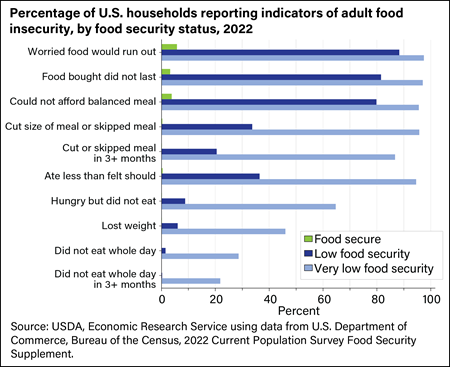I am a little embarrassed to admit this. Here it goes. I came late to the term Food Insecurity. This term is so ubiquitous now in the light of the tragic consequences of the Covid-19 pandemic. Everyday, reports about food insecurity are rolling off the presses and plastered everywhere, shocking us into disbelief as we equate it with images of endless lines of cars and people awaiting offerings of food donations. Though the immensity of the problem came on with a vengeance, we seem to have assumed that describing it in this way long had a place and an understanding of meaning among the general populace. The experience is not new.
I am always late to catch on to new trends, including those in our vocabulary. When I do eventually gain awareness, sometimes by use of blunt force, the new words or phrases do not roll easily off my tongue or out through my typing fingers. So, while I may have lagged behind on ‘cancel culture’ or ‘on fleek’–but, food insecurity? C’mon. Really?

Actually, the definition of food insecurity has many variations. These include: the lack of consistent access to sufficient food for an active healthy life; a lack of available financial resources for food at the household level; a lack of access by all household members at all times to enough food for an active, healthy life, which includes as a minimum the ready availability of nutritionally adequate and safe foods–and assured ability to acquire acceptable foods in socially acceptable ways (without resorting to emergency food supplies, scavenging, stealing, or other coping strategies); and, the state of being without reliable access to a sufficient quantity of nutritious food. While similar, the nuanced differences may contain some significance.
In an attempt to capture the degree of food insecurity and ideally, but imprecisely, the extent of hunger, the USDA established two sub-categories: Low food security–the reduced quality, variety, or desirability of diet with little or no indication of reduced food intake; and, Very low food security–multiple indications of disrupted eating patterns and reduced food intake. (See chart.) (Hmm, ‘Gained weight’ should also be listed.) However one wishes to slice it, it is not pretty. In 2018, an estimated 1 in 9 Americans were food insecure, equating to over 37 million Americans, including more than 11 million children.[1] It is a lot worse now. Feeding America, the nation’s largest hunger relief organization, tracks this data, with information on current impacts documented here.
As a Nutritionist who has concerned herself with food insecurity issues for almost half a century, not only should I have been hip to the term sooner, I should have been way ahead of the curve–like one of the first to know. Apparently, which means I just learned, the USDA began collecting and measuring data on food insecure households in 1995. That year, I was working for the Special Supplemental Nutrition Program for Women, Infants and Children or WIC-administered by the USDA. Clearly, I missed the internal memo of what they were up to.
My own ignorance came to stare at me with incredulity when in late 2018 my work found me supporting recipients of FINI Program Grants. I understood the program, and it was easy to casually throw around the acronym, but I would hesitate each time I had to recall what FINI stood for. FINI was shorthand for the Food Insecurity Nutrition Incentive Program. FINI Grants were established and written into the 2014 Farm Bill to ‘incentivize’ the purchase of fruits and vegetables by Supplemental Nutrition Assistance Program (SNAP) recipients.
In 2019, just as I had cemented the name of the program into my prefrontal cortex, it was changed to the Gus Schumacher Nutrition Incentive Program or GusNIP, in memory of the former Undersecretary of Agriculture. He was instrumental in visioning and implementing early models of expanding produce purchasing power through vouchers for low-income consumers, and advancing the legislation that authorized the Farm Bill funding. The new name retained the nutrition incentive part but snipped away the food insecurity part. I appreciate the intention of the program, and have championed its cause and those who lovingly administer it, but I’d prefer the use of the word ‘support’ rather than ‘incentive’. And, I think “Nutrition Security Support’ better encourages the matter.
I also came to learn that there was a Food Insecurity Screening Tool. Developed by the USDA’s Economic Research Service when they began measuring such things, the original version contained 18 questions. That has had different iterations through the years with variations of ten, six and even down to the Hunger Vital Sign’s apparently validated, yet oddly crafted, two questions which are:
“Within the past 12 months, we worried whether our food would run out before we had money to buy more.”
“Within the past 12 months, the food we bought just didn’t last and we didn’t have money to get more.”
Yikes, how did I miss that? How had it taken me so long, just a mere year or two before the pandemic flashed Food Insecurity before us all like a neon sign, to find familiarity with these terms? Was insecurity a word I used only in describing myself? What had I been doing with my many hundreds of clients to ascertain someone’s vulnerabilities in order to know how to help them? Had I missed something big?
To make sure I hadn’t just forgotten, I searched all of my 125 blog posts dating from 2010 to check. Before 2018, I used the term twice. I am pretty sure that means that a year ago, when I did a big blog cleanup, I inserted it to make it appear that I was appropriately informed back then. But, this has made me really stop to wonder–how had I functioned without the use of the term and the screening tool?
The answer may be relatively simple. With my work in low-income communities, there was not usually much to discern in the way of food insecurity–it was the norm. Regarding distinctions between low or very low levels, I definitely saw both–though I rarely encountered abject hunger as one might in other environments. Hunger in its most pure form is sadly more prevalent now in the wake of Covid-19. Most of the folx who had the capacity to find their way to a nutrition appointment, had at least some resources. Once there with me, I had the time to sit and have real conversations about the intimate details of their feeding lives. And, I employed my own screening tools to glean what I needed to know. Any nutrition consult necessitates some vague calculation of financial means and available food dollars. There is a big chunky space between peanut butter and almond butter.
Nonetheless, I know that many details of people’s circumstances have slipped through my cracks. I have discussed my limitations here. However, I think my assessments regarding my clients’ food resources were somewhat near the mark, though I still feel badly about the time I recommended wild rice to a man who expressed to me his dismay due to the price.
That misstep highlights a distinction between nourishment for the still generally well, and the oh-not-so-good. This marks how the differences mentioned above in defining food insecurity in relation to ‘nutritious’ may matter. Also, if active lifestyle means caring for families, young children, elders, the ill or disabled–one’s own or other’s–or doing low wage service work or manual labor, then my clients were quite active. Healthy was often not up for debate. Through it all, my office desk drawer was well stocked with referrals to every food and health support resource and program around–including some I created. Yet, my efforts could not surmount the magnitude of the underlying problems.
So then, what terms were I using if not food insecurity? A whole bunch, including: poverty, exhaustion, trauma, nutritional violence, food deserts, malnutrition, restrictive and confusing SNAP regulations and bureaucracy, social services system overload, toxic food culture, exclusions for immigrants, disparities, inequality, high food costs, inadequate wages and a sad story to name a few. I guess I got by.
In closing, I share this telling by Jadon-Maurice Forbes, I Didn’t Drink Water At Dinner as a Poor, Black Kid. Start here. You may then be able to skip all the above.
Thank you for listening, sharing, following, and supporting my writing. Please subscribe in the sidebar to receive notice of new posts. Comments and greetings always welcome.
Be well. Take care. Stay safe. Let’s heal.
In health, Elyn

My Plate Haiku
Food bought did not last
Could not afford balanced meal
Food Insecurity
by 37 million Americans